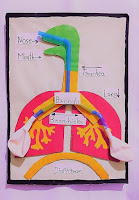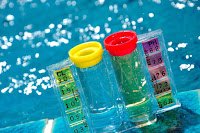60 Awesome Science model ideas for 7-12(science) students
Table of Contents
Class 7 :
"Solar-Powered Water Desalination System"
"Hydraulic Arm"
"Wind Turbine Generator"
"The Water Cycle Model"
"The Digestive System Model"
"The Human Heart Model"
"The Solar System Model"
"The Volcano Model"
"The Food Chain Model"
"The Simple Machines Model"
Class 8 :
"Electromagnetic Crane"
"The Greenhouse Effect Model"
"The Water Purification Model"
"The Human Respiratory System Model"
"The Solar Car Model"
"The Human Eye Model"
"The Windmill Model"
"The Solar Water Heater Model"
"The Microscope Model"
"The Digestive System Model with Demonstration"
Class 9:
"The Solar-Powered Stirling Engine Model"
- This model demonstrates how a Stirling engine can be powered by solar energy. Students could build a small Stirling engine using a heat source, a piston, and a few other simple materials. The model could be used to teach kids about thermodynamics and renewable energy.
For more
"The Water Electrolysis Model"
- This model shows how water can be split into hydrogen and oxygen using electricity. Students could build a small electrolysis cell using a battery, wires, and electrodes. The model could be used to teach kids about electrochemistry and the potential of hydrogen as a clean energy source.
For more Click here
"The Bridge Building Model"
- This model challenges students to build a bridge that can support a specified weight. Students could use wooden dowels, glue, and other materials to create a sturdy structure. The model could be used to teach kids about physics, engineering, and structural design.
For more Click here
"The pH Indicator Model"
- This model demonstrates how to use pH indicators to measure the acidity or alkalinity of a solution. Students could use litmus paper, universal indicator, and other materials to create a simple pH testing kit. The model could be used to teach kids about chemistry, acid-base reactions, and environmental pollution.
For more Click here
"The DNA Extraction Model"
- This model demonstrates how to extract DNA from a fruit or vegetable. Students could use household items such as dish soap, salt, and alcohol to extract the DNA. The model could be used to teach kids about biology, genetics, and biotechnology.
For more Click here
"The Wind Turbine Model"
- This model demonstrates how wind energy can be used to generate electricity. Students could build a small wind turbine using a motor, blades, and a few other simple materials. The model could be used to teach kids about renewable energy, aerodynamics, and electricity generation.
For more Click here
"The Electro-Magnetic Levitation Model"
- This model demonstrates how magnetic fields can be used to levitate objects. Students could use a neodymium magnet, a coil of wire, and a battery to create a simple electromagnetic levitation device. The model could be used to teach kids about magnetism, electromagnetism, and engineering applications.
For more Click here
"The Microbial Fuel Cell Model"
- This model demonstrates how microorganisms can be used to generate electricity. Students could build a small microbial fuel cell using a bacterial culture, electrodes, and a few other simple materials. The model could be used to teach kids about microbiology, biotechnology, and renewable energy.
For more Click here
"The Vernier Caliper Model"
- This model demonstrates how to use a Vernier caliper to measure small distances with precision. Students could use a plastic caliper, ruler, and other materials to create a simple measuring tool. The model could be used to teach kids about measurement, precision, and engineering applications.
For more Click here
"The Holography Model"
- This model demonstrates how holography works and how it can be used to create three-dimensional images. Students could use a laser, holographic film, and other materials to create a simple hologram. The model could be used to teach kids about optics, holography, and the potential of holography technology.
For more Click here
Class 10:
"The Biogas Plant Model"
- This model demonstrates how organic waste can be used to generate biogas, a renewable energy source. Students could build a small biogas plant using a container, organic waste, and other materials. The model could be used to teach kids about renewable energy, microbiology, and waste management.
For more Click here
"The Solar Water Heater Model"
- This model demonstrates how solar energy can be used to heat water. Students could build a small solar water heater using a container, a heat-absorbing material, and other materials. The model could be used to teach kids about renewable energy, heat transfer, and energy efficiency.
For more Click here
Also read this 👁️:
"The Electromagnetic Induction Model"
- This model demonstrates how changing magnetic fields can induce an electric current in a conductor. Students could use a coil of wire, a magnet, and a battery to create a simple electromagnetic induction device. The model could be used to teach kids about electromagnetism, electrical power generation, and engineering applications.
For more Click here
"The Solar-Powered Car Model"
- This model demonstrates how solar energy can be used to power a small car. Students could build a small solar-powered car using a solar panel, a motor, and other materials. The model could be used to teach kids about renewable energy, mechanics, and engineering applications.
For more Click here
"The Artificial Intelligence Model"
- This model demonstrates how artificial intelligence works and its potential applications. Students could use a computer program or a simple robot to create a basic AI model. The model could be used to teach kids about computer science, robotics, and artificial intelligence technology.
For more Click here
"The Spectrophotometer Model"
- This model demonstrates how a spectrophotometer can be used to measure the absorbance of light by a substance. Students could use a light source, a sample chamber, and a detector to create a simple spectrophotometer. The model could be used to teach kids about spectroscopy, chemical analysis, and medical diagnostics.
For more Click here
"The Nanotechnology Model"
- This model demonstrates the principles of nanotechnology and its potential applications. Students could use simple materials such as carbon nanotubes or graphene to create a basic nanotechnology model. The model could be used to teach kids about physics, chemistry, and nanotechnology technology.
For more Click here
"The Hydroponics Model"
- This model demonstrates how plants can be grown without soil, using a nutrient-rich water solution. Students could build a small hydroponics system using a container, nutrient solution, and other materials. The model could be used to teach kids about agriculture, plant biology, and sustainability
For more Click here
"The Robotic Arm Model"
- This model demonstrates how robotic arms work and their potential applications. Students could use a simple robot arm kit or create their own robotic arm using motors, sensors, and other materials. The model could be used to teach kids about robotics, engineering, and industrial automation.
For more Click here
"The Space Elevator Model"
- This model demonstrates the concept of a space elevator, a proposed method of transporting people and cargo from Earth into space. Students could use a cable, a counterweight, and other materials to create a small-scale model of a space elevator. The model could be used to teach kids about physics, space exploration, and engineering applications
For more Click here
Class 11(science):
"DNA Extraction Model/chart"
- This model demonstrates the process of DNA extraction from a cell. Students could use household materials such as soap, salt, and alcohol to extract DNA from a fruit or vegetable. The model could be used to teach students about genetics, biotechnology, and laboratory techniques.
For more Click here
"The Solar Cell Model"
- This model demonstrates how solar cells convert sunlight into electricity. Students could build a small solar cell using a solar panel, a diode, and other materials. The model could be used to teach students about renewable energy, semiconductor physics, and electrical engineering.
For more Click here
"The Brain Computer Interface chart"
- This model demonstrates how brain signals can be used to control a computer or other devices. Students could use a simple electroencephalography (EEG) device and computer software to create a basic brain-computer interface. The model could be used to teach students about neuroscience, computer science, and human-machine interaction.
For more Click here
"The Microbial Fuel Cell Model/chart"
- This model demonstrates how microbial fuel cells can generate electricity from organic matter. Students could build a small microbial fuel cell using a container, organic waste, and other materials. The model could be used to teach students about renewable energy, microbiology, and biotechnology.
For more Click here
"The Quantum Entanglement chart"
- This model demonstrates the concept of quantum entanglement, a phenomenon where two particles become correlated in a way that cannot be explained by classical physics. Students could use simple materials such as marbles or dice to create a basic quantum entanglement model. The model could be used to teach students about quantum mechanics, information theory, and cryptography.
For more Click here
"The Artificial Photosynthesis Model"
- This model demonstrates how artificial photosynthesis can be used to generate fuel from sunlight, water, and carbon dioxide. Students could build a small artificial photosynthesis device using a solar panel, catalysts, and other materials. The model could be used to teach students about renewable energy, chemistry, and nanotechnology.
For more Click here
"The Humanoid Robot Model"
- This model demonstrates how humanoid robots work and their potential applications. Students could use a simple humanoid robot kit or create their own robot using motors, sensors, and other materials. The model could be used to teach students about robotics, engineering, and artificial intelligence.
For more Click here
"The Gene Editing chart"
- This model demonstrates how gene editing technology such as CRISPR can be used to modify the DNA of living organisms. Students could use a computer program or a simple kit to create a basic gene editing model. The model could be used to teach students about genetics, biotechnology, and ethical considerations.
For more Click here
"The 3D Bioprinting chart"
- This model demonstrates how 3D bioprinting can be used to create living tissues and organs. Students could use a simple 3D printer and biocompatible materials to create a basic 3D bioprinting model. The model could be used to teach students about biotechnology, regenerative medicine, and biomedical engineering.
For more Click here
"The Fusion Reactor Model"
- This model demonstrates the principles of nuclear fusion, a process that powers stars and could potentially provide a clean and abundant source of energy on Earth. Students could use simple materials such as magnets and plasma to create a basic fusion reactor model. The model could be used to teach students about nuclear physics, energy production, and engineering challenges.
For more Click here


















































